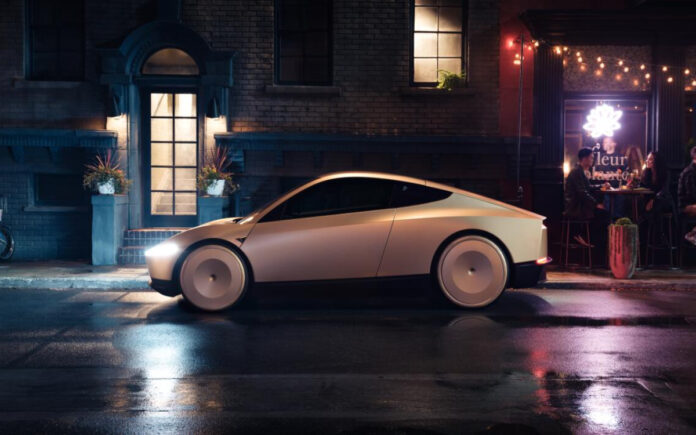New York: Tesla CEO Elon Musk has effectively confirmed that the automaker has moved away from its long-promised $25,000 electric vehicle designed for human drivers, focusing instead on an autonomous version. During an earnings call on October 23, Musk addressed a question about the timeline for a budget-friendly, non-robotaxi model by stating, “I think having a regular $25K model is pointless. It would be silly.”
This statement came months after a Reuters report in April claimed Tesla had abandoned plans for a low-cost, driver-operated EV, resulting in a temporary dip in Tesla’s stock. Musk initially denied the report, but recent remarks suggest Tesla’s priorities have shifted toward an autonomous alternative—the “Cybercab”.
Autonomous Cybercab: Tesla’s $25K Solution
In the October earnings call, Musk introduced Tesla’s forthcoming “Cybercab”, a two-door, two-seat, fully autonomous vehicle targeting a 2026 production date. First unveiled at an October 10 event in Los Angeles, the Cybercab represents Tesla’s commitment to autonomous driving, marking a departure from traditional, affordable EV options.
Musk indicated that the Cybercab would be manufactured in line with the same advanced, autonomous technology being rolled out for updated Model 3 and Model Y vehicles in 2025, aiming for deployment in Texas and California.
Shifts in Tesla’s Strategy and Goals
Until recently, Tesla’s roadmap included producing a mass-market $25,000 EV as part of its ambition to achieve 20 million vehicle sales annually by 2030. However, Tesla has since removed this target from its sustainability report, suggesting a recalibration of goals amidst competitive pressures, particularly from rapidly advancing Chinese EV manufacturers.
Originally, investors and fans referred to the proposed affordable model as “Model 2”, expected to be built on an entirely new platform with revolutionary manufacturing processes. However, in recent months, Musk hinted at “more affordable” vehicles on Tesla’s existing production lines, expected to price in the mid-$30,000 range, per analysts.
Also Read | New Opposition to Ukraine Emerges Within the European Union
Ambiguity Surrounding the Cybercab’s Market Appeal
Despite Musk’s optimism for the Cybercab, the model’s two-seat configuration has raised questions about its suitability for the broader robotaxi market. In the U.S., the two-door, two-seat layout is rare, potentially limiting its appeal to rideshare users.
Tesla’s October event, which also showcased autonomous concepts like a “Robovan” and humanoid robots, left some investors unconvinced. Without confirmation on whether the Cybercab will include new autonomous technology, it remains uncertain how much it will improve on Tesla’s current “Full Self-Driving” capabilities, which still require driver oversight.
Also Read | Putin Blames NATO for Strained Relations in Address to New Western Ambassadors
Competitive and Technological Challenges
As Tesla advances its autonomous plans, it faces technological, regulatory, and legal hurdles. Although Musk has been promising fully autonomous vehicles for nearly a decade, achieving regulatory approval and maintaining customer safety remains complex. With Tesla’s commitment to autonomous solutions, the company appears positioned to innovate in the self-driving space, yet the market viability of vehicles like the Cybercab will depend on regulatory outcomes and consumer adoption.



